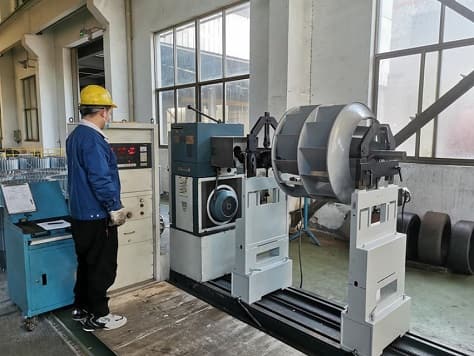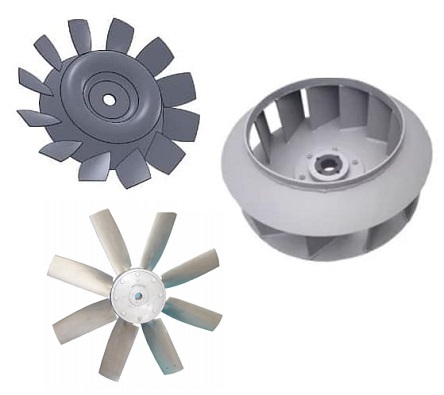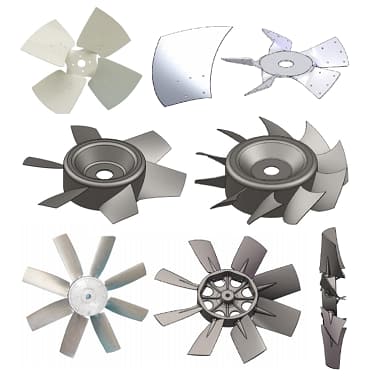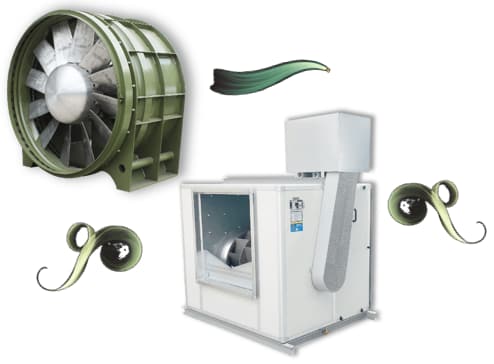Industrial Fan Balancing: Ensuring Optimal Performance and Longevity
Introduction
In the realm of industrial ventilation and smoke exhaust systems, the reliability and efficiency of fan is paramount. Whether deployed in commercial complexes, industrial plants, metro tunnels, or nuclear facilities, fan plays a critical role in maintaining air quality and safety. A fundamental aspect that ensures the optimal performance of these fans is industrial fan balancing. This process not only enhances operational efficiency but also extends the lifespan of the equipment.
Understanding Industrial Fan Balancing
Industrial fan balancing refers to the process of adjusting the mass distribution of a fan's rotating components—primarily the impeller—to ensure smooth operation. An unbalanced fan can lead to excessive vibrations, noise, and premature wear of components. Balancing is typically categorized into two types:
-
Static Balancing: Ensures that the mass centerline is aligned with the axis of rotation.
-
Dynamic Balancing: Addresses the distribution of mass in multiple planes, accounting for both the magnitude and phase of imbalance.
Dynamic balancing is particularly crucial for high-speed industrial fans, such as those used in metro tunnel ventilation and nuclear-grade applications, where precision and reliability are non-negotiable.


Dynamic fan balancing for axial impeller Dynamic fan balancing for centrifugal impeller
Importance of Proper Fan Balancing
The significance of industrial fan balancing cannot be overstated. Properly balanced fans offer numerous benefits:
-
Reduced Vibration: Minimizes stress on bearings and structural components, preventing premature failures.
-
Enhanced Efficiency: Ensures optimal airflow and energy consumption, leading to cost savings.
-
Extended Equipment Lifespan: Reduces wear and tear, thereby prolonging the operational life of the fan.
-
Improved Safety: Decreases the risk of mechanical failures that could lead to hazardous situations, especially in critical environments like nuclear facilities.
-
Noise Reduction: A balanced fan operates more quietly, contributing to a more comfortable environment.
Standards Governing Fan Balancing
Adherence to established standards is essential for ensuring the quality and reliability of fan balancing processes. Two primary standards are widely recognized in the industry:
-
ISO 1940-1: This international standard specifies balance quality requirements for rotors in a constant (rigid) state. It defines balance quality grades (e.g., G2.5, G6.3, G16) and provides guidelines for permissible residual unbalance.
-
AMCA 204: Published by the Air Movement and Control Association (AMCA), this standard provides guidelines for balance quality and vibration levels specifically for fans. It aligns with ISO 1940-1 but offers more detailed recommendations tailored to various fan types and applications.
For instance, AMCA 204 suggests a balance quality grade of G2.5 for small fans and G4.0 for larger centrifugal fans, considering factors like impeller weight and rotational speed.
Causes of Fan Imbalance
Understanding the root causes of fan imbalance is crucial for effective maintenance and prevention:
-
Manufacturing Defects: Inaccuracies during fabrication can lead to uneven mass distribution.
-
Material Buildup: Accumulation of dust, debris, or other materials on the impeller blades can cause imbalance.
-
Wear and Tear: Over time, components may degrade, leading to asymmetrical mass distribution.
-
Corrosion: Exposure to harsh environments can corrode parts of the fan, affecting balance.
-
Improper Maintenance: Inadequate or irregular maintenance practices can exacerbate imbalance issues.
Techniques for Achieving Optimal Balance
Several methods are employed to achieve and maintain proper fan balance:
-
In-Shop Balancing: Performed in a controlled environment using specialized equipment to detect and correct imbalances before installation.
-
Field Balancing: Conducted on-site, this method is essential for large or installed fans where disassembly is impractical. It involves measuring vibrations and making necessary adjustments without removing the fan from its operational setting.
-
Use of Balancing Machines: These machines rotate the fan components and measure vibrations to identify imbalance. Corrections are made by adding or removing weight at specific locations.
-
Laser Alignment Tools: Advanced tools that provide precise measurements for alignment and balance, ensuring optimal performance.
Conclusion
Industrial fan balancing is a critical aspect of ensuring the efficiency, safety, and longevity of ventilation systems across various sectors. By adhering to established standards like ISO 1940-1 and AMCA 204, and employing precise balancing techniques, manufacturers and maintenance teams can mitigate risks associated with fan imbalance. Regular monitoring and maintenance are essential to detect and correct imbalances promptly, thereby safeguarding operations and extending equipment lifespan.
Note: The content of the article cannot avoid omissions and errors. Welcome to propose corrections.
 Libere el poder del ventilador de gabinete
Libere el poder del ventilador de gabinete
 Ventilador axial industrial: Cómo mantener una circulación de aire adecuada
Ventilador axial industrial: Cómo mantener una circulación de aire adecuada
 Ventilador de ventilación industrial: manteniendo una buena calidad del aire
Ventilador de ventilación industrial: manteniendo una buena calidad del aire
 Ventilador a prueba de explosiones: garantizando la seguridad en entornos peligrosos
Ventilador a prueba de explosiones: garantizando la seguridad en entornos peligrosos

